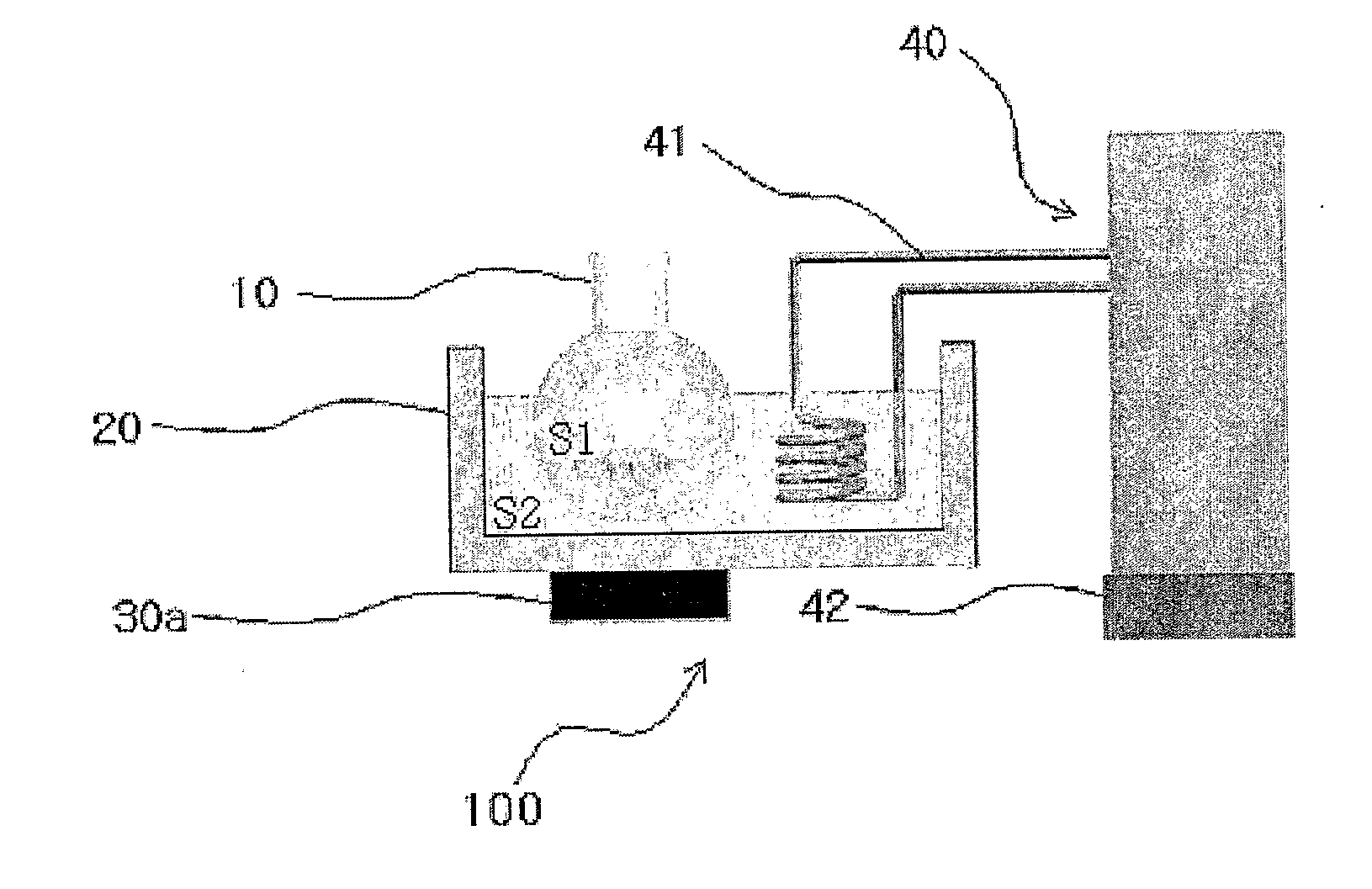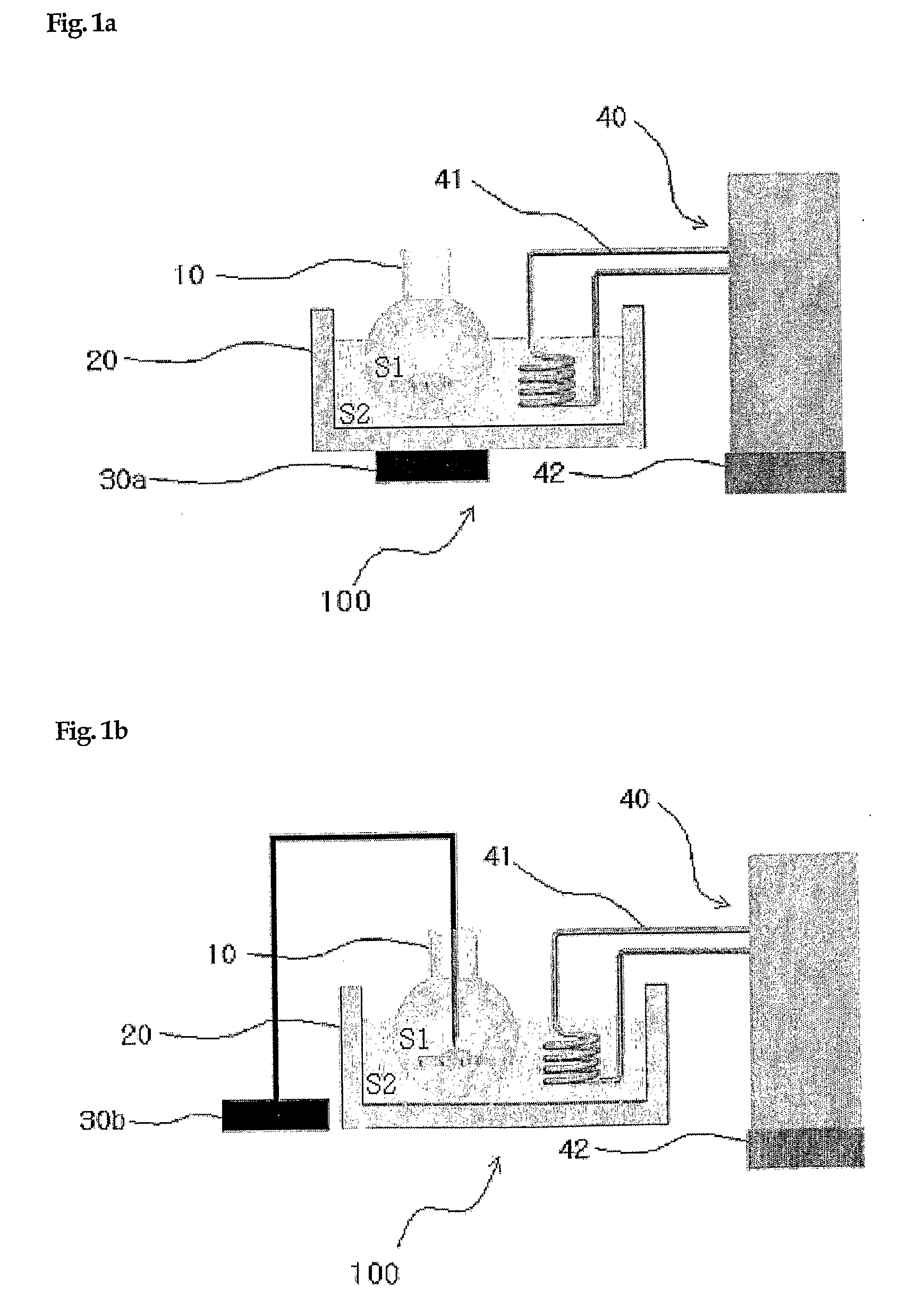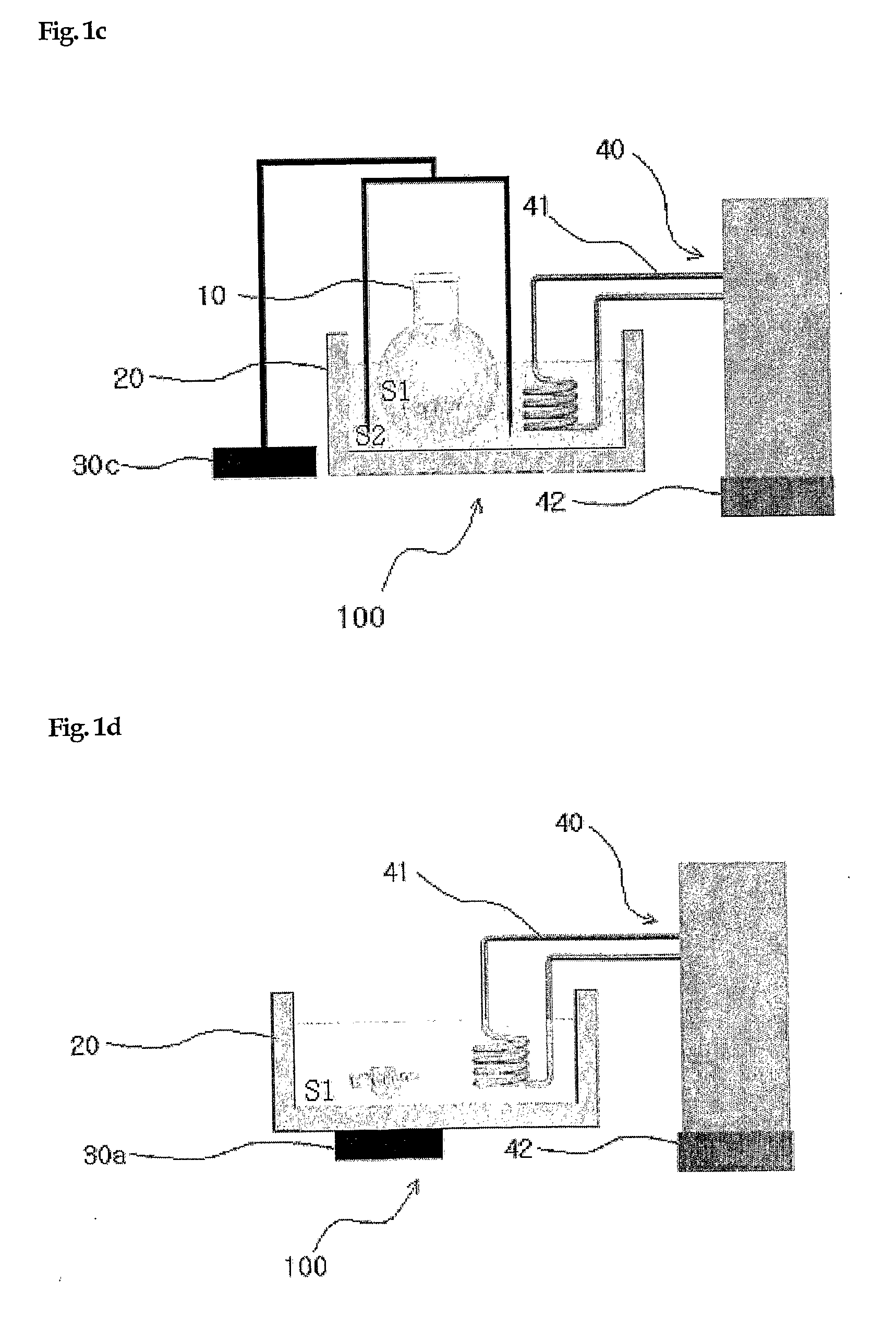Method of Preparing Substrates - Molecular Sieve Layers Complex Using Ultrasound and Apparatuses Used Therein
a molecular sieve and complex technology, applied in the direction of mechanical vibration separation, ceramic layered products, physical/chemical process catalysts, etc., can solve the problems of zeolite that cannot be controlled in the direction, zeolite that is easy to dissociate from a substrate, and complicated to proceed more than 6 steps, so as to improve binding strength, binding intensity and density, and reduce time and energy
- Summary
- Abstract
- Description
- Claims
- Application Information
AI Technical Summary
Benefits of technology
Problems solved by technology
Method used
Image
Examples
example 1-10
Example 1
Preparation of Silicalite Mono-layer by Using 3-chloropropyltrimethoxysilane
[0080](1) Preparation of Glass Combined With 3-chloropropyltrimethoxysilane
[0081]Glass plate was placed in piranha solution (mixing H2SO4 and H2O in 7:3 of ratio) for 30 minutes, picked out, washed with distilled water and then, dried under nitrogen current in a high purity. The resulting glass plate was soaked in 100 ml reaction container filling 80 ml of toluene dissolving 0.5 g of 3-chloropropyltrimethoxysilane, coated on the surface with 3-chloropropylmono-layer to prepare glass CP-G by using ultrasound or simple reflux solely or by using both processes coordinately. After that, glass plate CP-G was picked out washed by using pure toluene and then, dried under nitrogen current in a high purity.
[0082](2) Preparation of Silicalite Mono-Layer by A Type Ultrasound Process
[0083]50 mg of silicalite in 2 μm of particle size was poured into 50 ml reaction container and then, 40 ml of pure toluene was a...
example 2
Preparation of Zeolite A Mono-Layer by Using 3-chloropropyltrimethoxysilane
[0088](1) Preparation of Zeolite A Mono-Layer by A Type Ultrasound Process
[0089]50 mg of zeolite A crystal was poured into a reaction container including 40 ml of pure toluene and dispersed by using an ultrasonic washing machine. Then, comb-shaped Teflon substrates were put into the solution and inserted with one sheet of CP-G prepared in Example 1 between teeth of comb. The reaction container was placed on the internal bottom of the apparatus for preparation using ultrasonic wave and fixed on a stand. The apparatus for preparation was filled with water to submerge the reaction container sufficiently until reaching the liquid level of toluene included in the container and adjusted by using a temperature controller to maintain water at 20° C. After that, zeolite A was attached on the surface of CP-G for 2 minutes by using 28 KHz frequency of ultrasonic wave (under 95 W of electric power) through an ultrasonic ...
example 3
Preparation of Yellow Ocher Particle (Laminated Material) Mono-Layer by Using 3-chloropropyltimethoxysilane
[0094](1) Preparation of Yellow Ocher Mono-Layer by A Type Ultrasound Process
[0095]50 mg of yellow ocher particle having 1-2 μm of size was put into a reaction container including 40 ml of pure toluene and dispersed uniformly by using an ultrasonic washing machine. Then, comb-shaped Teflon substrates were put into the solution and inserted with one sheet of CP-G prepared in Example 1 between teeth of comb. The round flask was placed on the internal bottom of the apparatus for preparation using ultrasonic wave and fixed on a stand. The apparatus for preparation was filled with water to submerge the round flask sufficiently until reaching the liquid level of toluene included in the flask and adjusted by using a temperature controller to maintain water at 20° C. After that, yellow ocher particles were attached on the surface of CP-G for 2 minutes by using 28 KHz frequency of ultra...
PUM
| Property | Measurement | Unit |
|---|---|---|
| semi-conductive property | aaaaa | aaaaa |
| conductive | aaaaa | aaaaa |
| luminescent | aaaaa | aaaaa |
Abstract
Description
Claims
Application Information
 Login to View More
Login to View More - R&D
- Intellectual Property
- Life Sciences
- Materials
- Tech Scout
- Unparalleled Data Quality
- Higher Quality Content
- 60% Fewer Hallucinations
Browse by: Latest US Patents, China's latest patents, Technical Efficacy Thesaurus, Application Domain, Technology Topic, Popular Technical Reports.
© 2025 PatSnap. All rights reserved.Legal|Privacy policy|Modern Slavery Act Transparency Statement|Sitemap|About US| Contact US: help@patsnap.com



